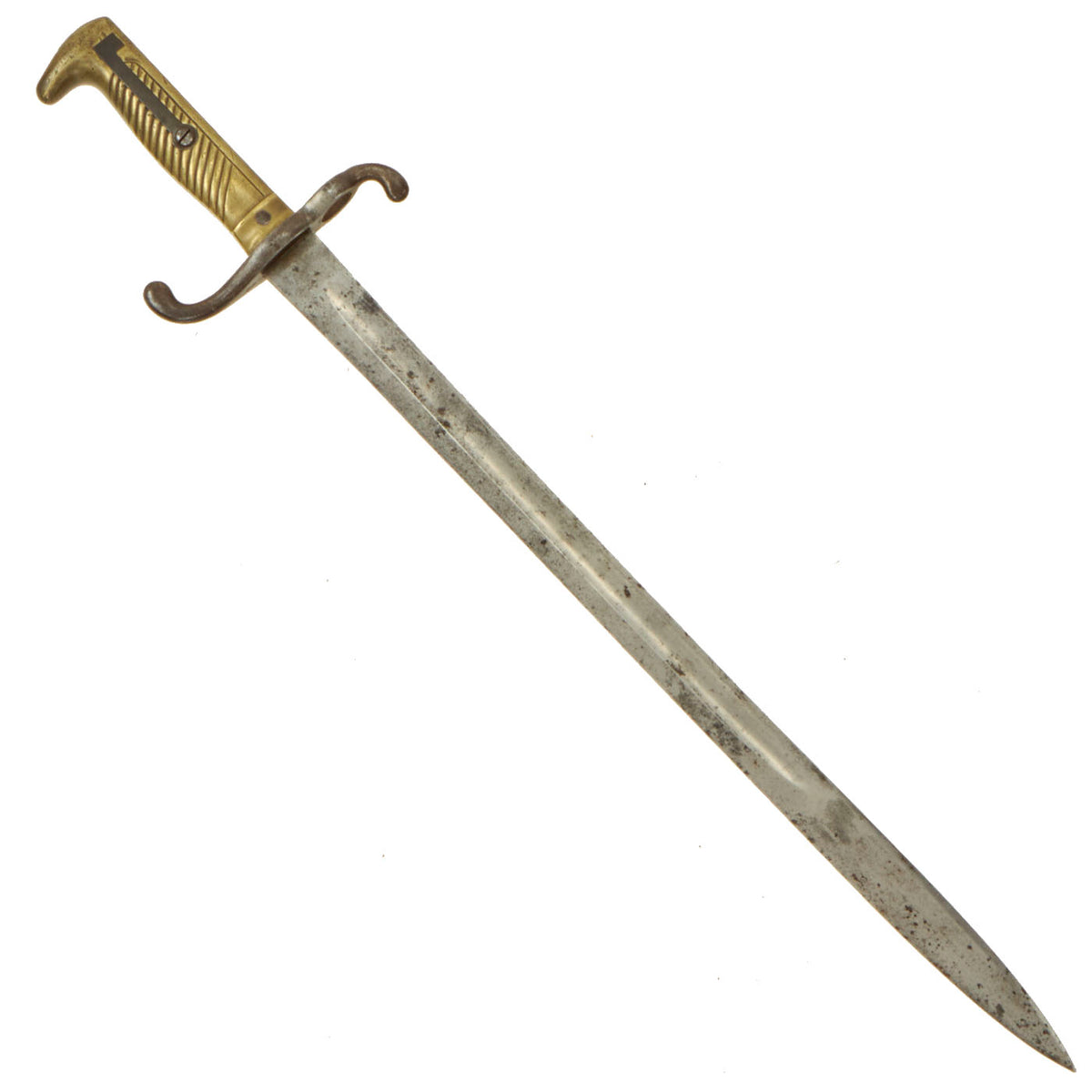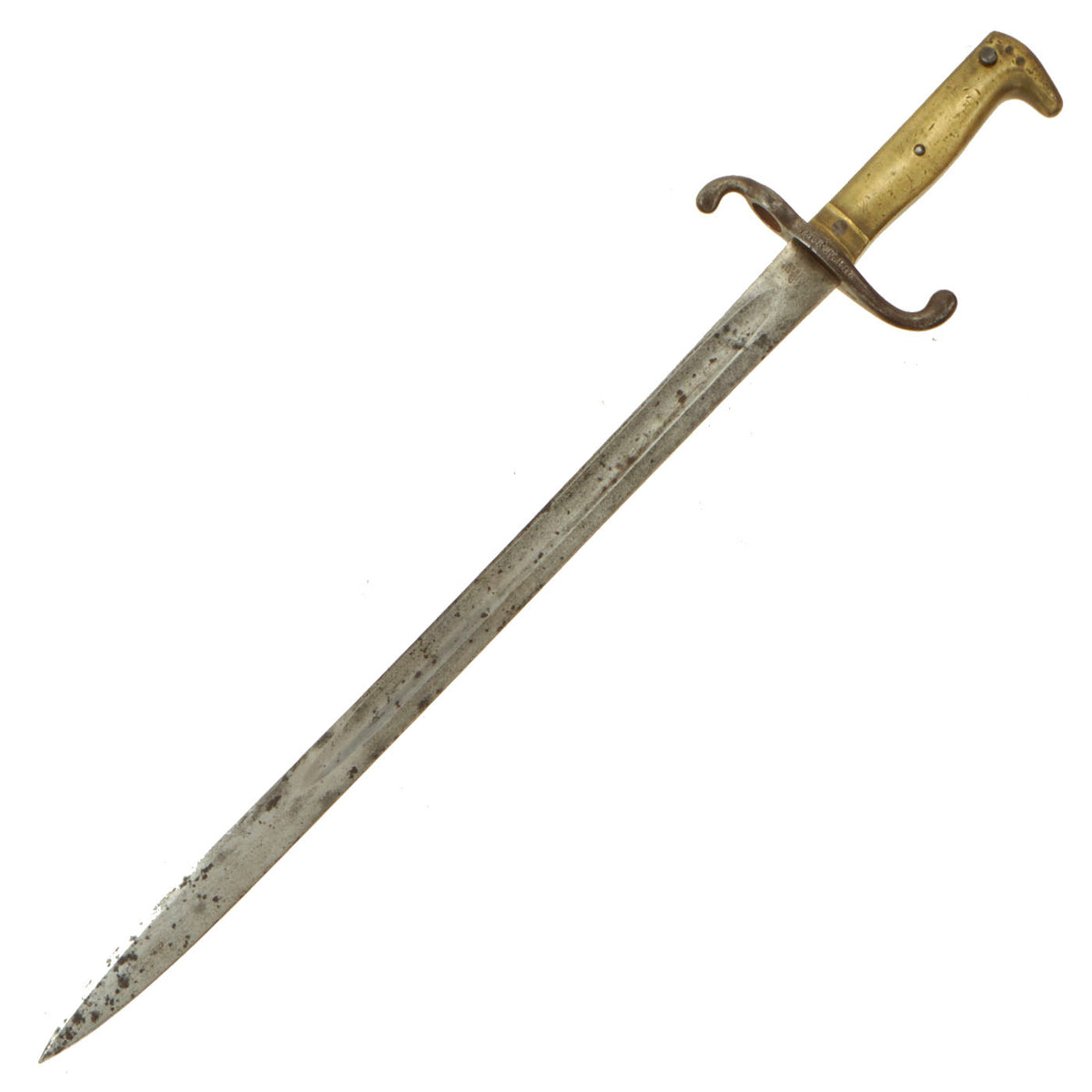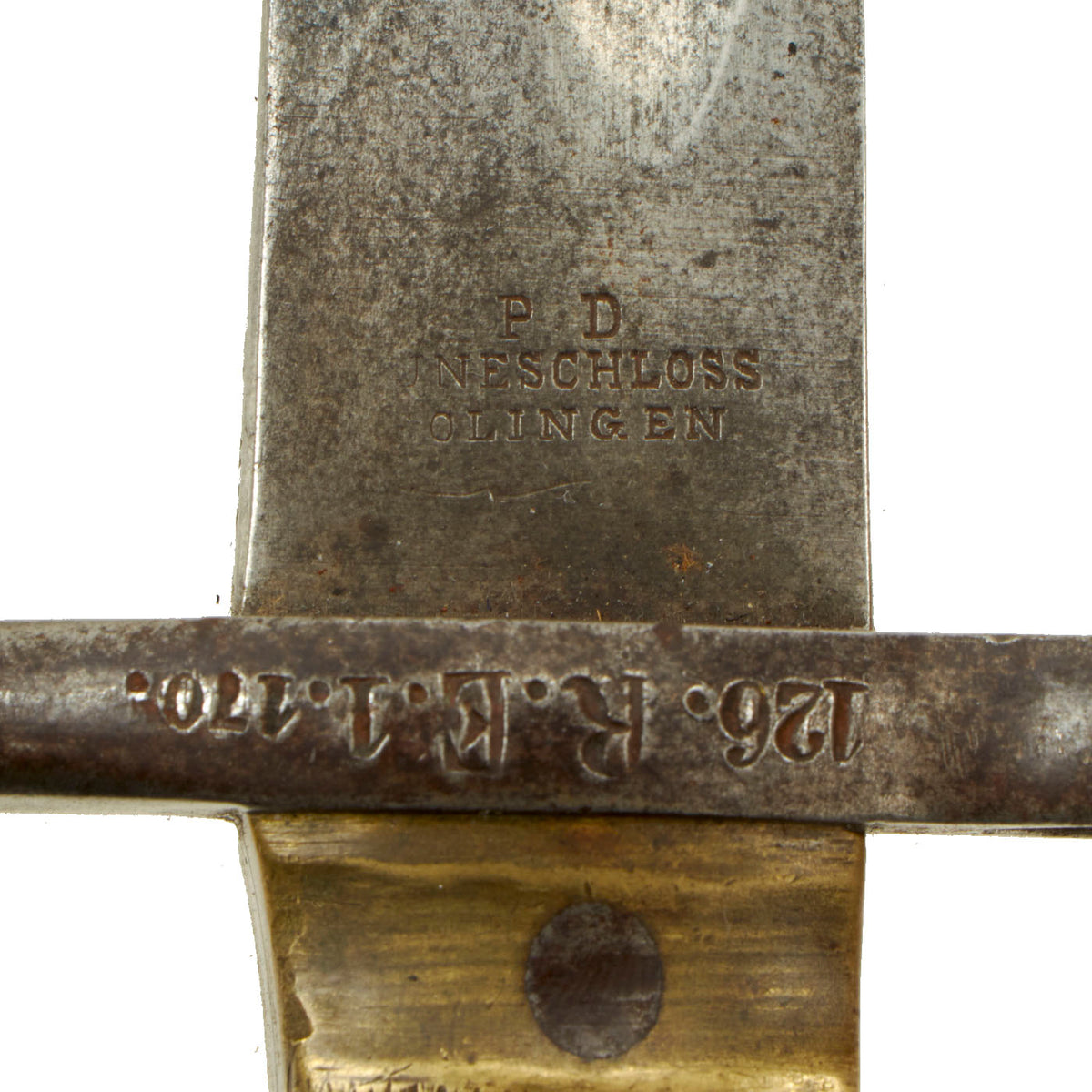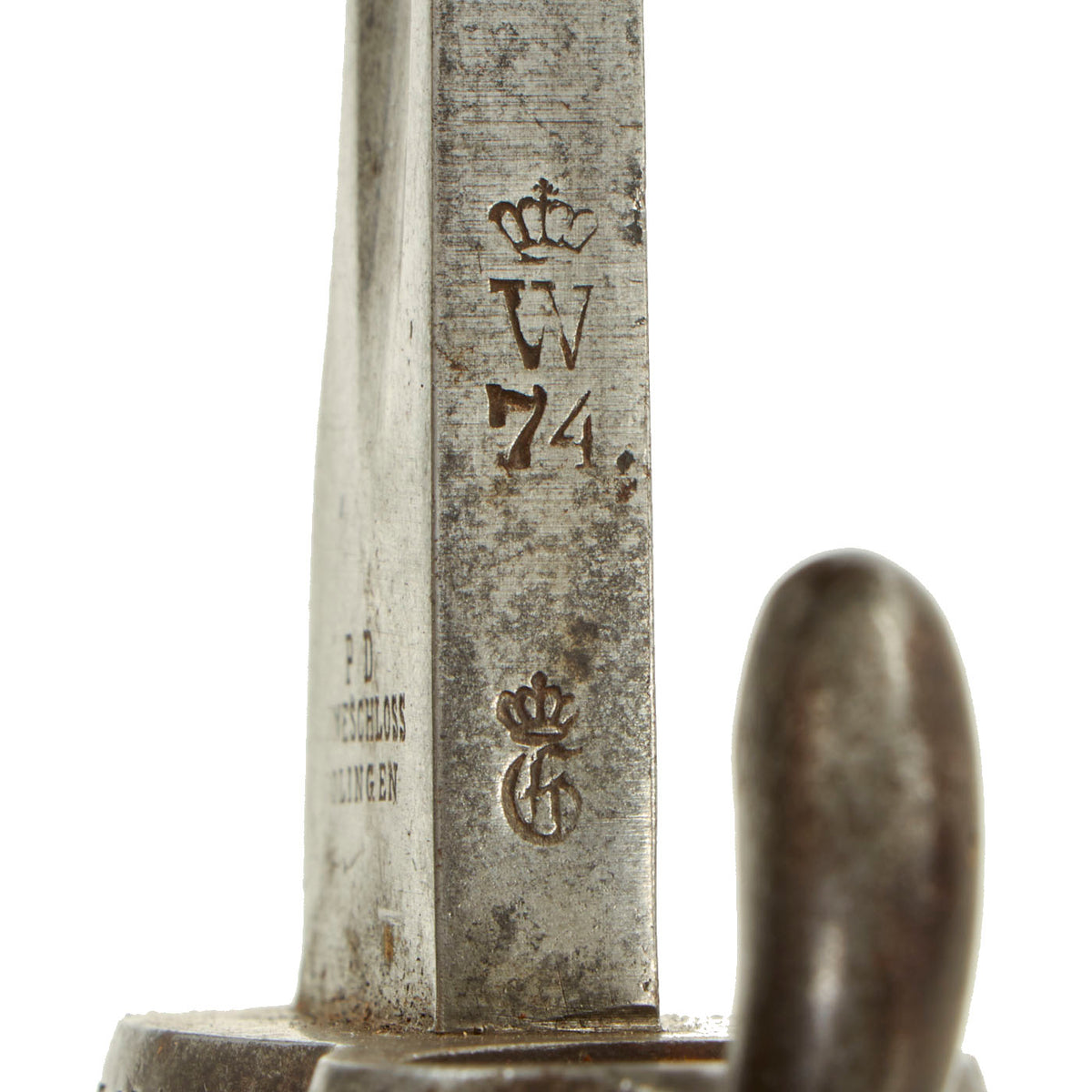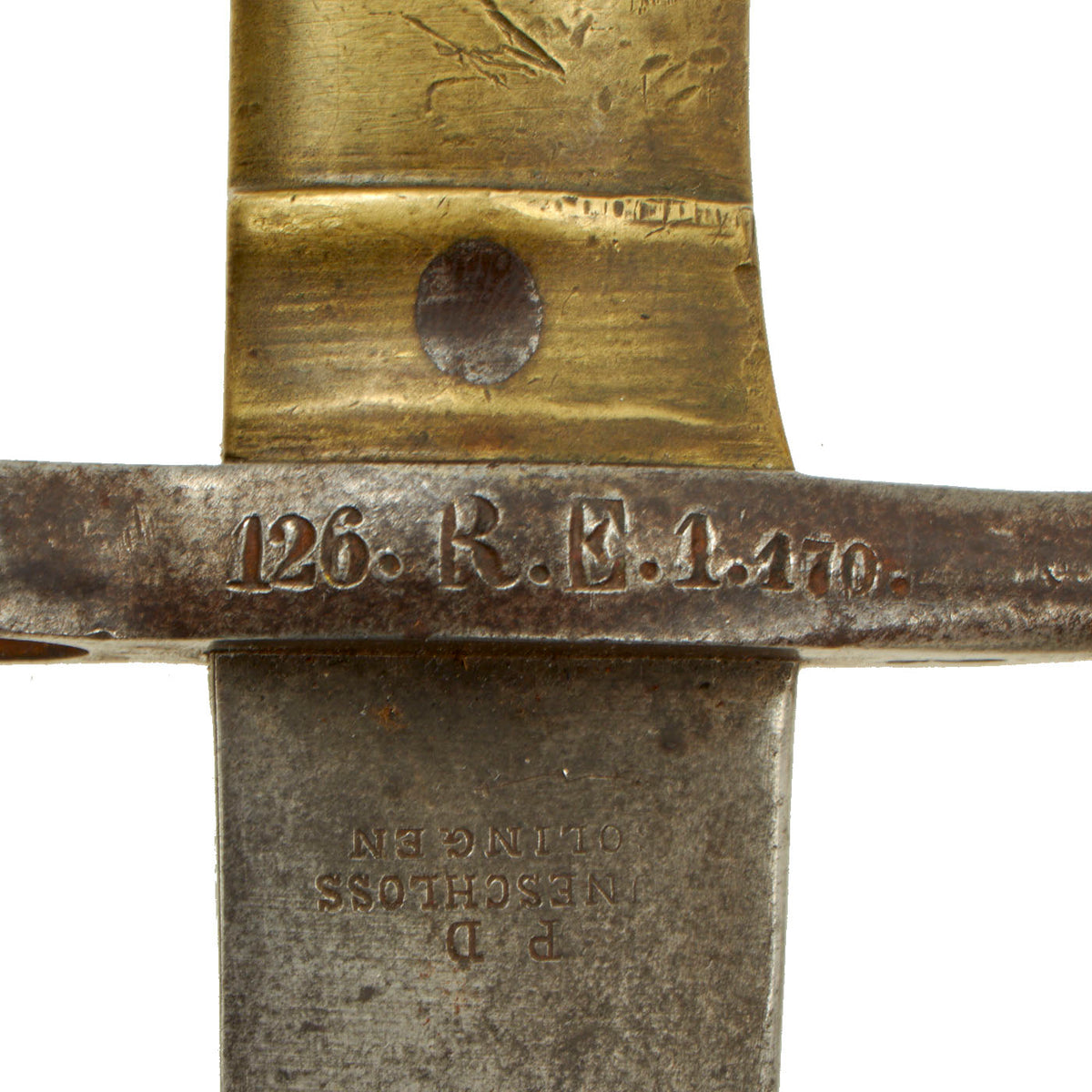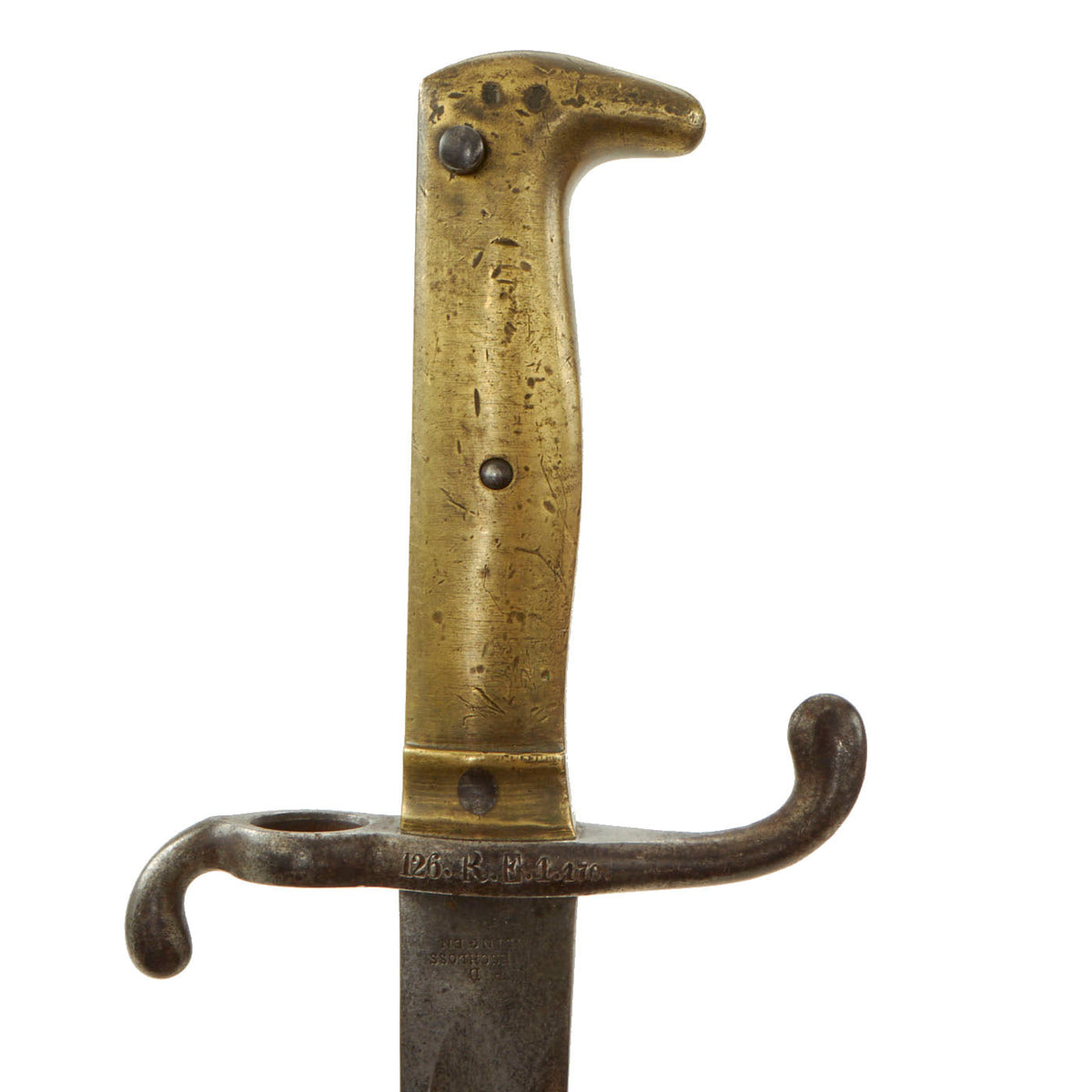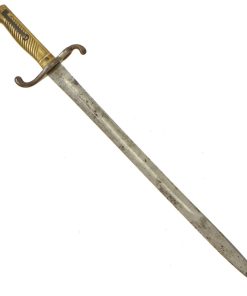Original German Mauser Model 1871 Rifle Bayonet Dated 1874 by P.D. Lüneschloss – Regimentally Marked Original Items
$ 295,00 $ 118,00
Original Item: Only One Available. This is a very nice example of the Mauser Model 1871 rifle bayonet with brass hilt, complete with the original brass-fitted leather scabbard. The bayonet is in good condition, and is marked on the rear of the blade with (Crown) / W / 74, indicating acceptance in 1876 during the reign of German Emperor Wilhem I, who reigned 1871-1888.
The steel blade is 18 1/2″ long and is in very good condition. The blade has not been sharpened, and has some spots of staining on the blade. The reverse ricasso is stamped with the P.D. Lüneschloss simplified address:
P. D. LÜNESCHLOSS
SOLINGEN
This well-known company was founded in 1810 by Peter Daniel Lüneschloss, and produced numerous edged weapons, both for domestic and foreign contracts. They manufactured many private purchase officer’s swords and blades for the U.S. Civil war. This marking was particularly used during the Third Reich period on walking out bayonets, per J. Anthony Carter’s work GERMAN KNIFE AND SWORD MAKERS.
The bayonet also bears a regimental marking: 126. R. E. 1.170. , most likely for the 126th (8th Württemberg) Infantry “Grand Duke Frederick of Baden” Regiment, Ersatz (Replacement) Battalion, 1st company, 170th weapon.
A very nice example of this relatively rare bayonet, read to display!
Specifications:
Blade Length: 18 1/2″
Blade Style: Single Edge with Fuller
Overall length: 23 1/2“
Crossguard: 4 5/8”
The Mauser Model 1871 adopted as the Gewehr 71 or Infanterie-Gewehr 71, or “Infantry Rifle 71” (“I.G.Mod.71” was stamped on the rifles themselves) was the first rifle model in a distinguished line designed and manufactured by Paul Mauser and Wilhelm Mauser of the Mauser company and later mass-produced at Spandau arsenal.
Paul Mauser developed his bolt-action rifle from 1867 to 1871. During 1870–71 trials with many different rifles took place, with the “M1869 Bavarian Werder” being the Mausers’ chief competitor. The Mauser was provisionally adopted on 2 December 1871, pending the development of an appropriate safety. With support from the government’s Spandau arsenal, the improvements to the safety mechanism were completed and the rifle was formally accepted on 14 February 1872 as Infantry Rifle Model 1871 by the German Empire excluding Bavaria. General issue to troops began in late 1873 and all units had been converted by the spring of 1875. The Mauser 1871 was replaced by the magazine-fed, smokeless powder using Gewehr 1888 from 1888 through 1890.
Fast Shipping with Professional Packaging
Thanks to our longstanding association with UPS FedEx DHL, and other major international carriers, we are able to provide a range of shipping options. Our warehouse staff is expertly trained and will wrap your products according to our exact and precise specifications. Prior to shipping, your goods will be thoroughly examined and securely secured. We ship to thousands clients each day across multiple countries. This shows how we're dedicated to be the largest retailer on the internet. Warehouses and distribution centres can be located throughout Europe as well as the USA.
Note: Orders with more than one item will be assigned a processing date depending on the item.
Before shipping before shipping, we'll conduct a thorough inspection of the items you have ordered. Today, the majority of orders will be delivered within 48 hours. The delivery time will be between 3-7 days.
Returns
The stock is dynamic and we cannot completely manage it because multiple stakeholders are involved, including our factory and warehouse. So the actual stock may alter at any time. It's possible that you may not receive your order once the order has been made.
Our policy is valid for a period of 30 days. If you don't receive the product within 30 days, we are not able to issue a refund or an exchange.
You can only return an item if it is unused and in the same state as the day you received it. You must have the item in its original packaging.
Related products
Uncategorized
Uncategorized
Uncategorized
Uncategorized
Uncategorized
Armoured Fighting Vehicles of the World: AFVs of World War One (Hardcover Book) New Made Items
Uncategorized
Armored Burgonet Helmet & Polearm from Scottish Castle Leith Hall Circa 1700 Original Items
Uncategorized
Band of Brothers ORIGINAL GERMAN WWII Le. F.H. 18 10.5cm ARTILLERY PIECE Original Items
Uncategorized
Uncategorized
Uncategorized
Uncategorized
Uncategorized
Uncategorized
Angolan Rebel 1970s era 60mm Inert Display Mortar from Angolan Civil War Original Items
Uncategorized
Uncategorized
Uncategorized
Uncategorized
Australian WWII Owen MK1 Machine Carbine SMG Custom Fabricated Replica with Sling Original Items
